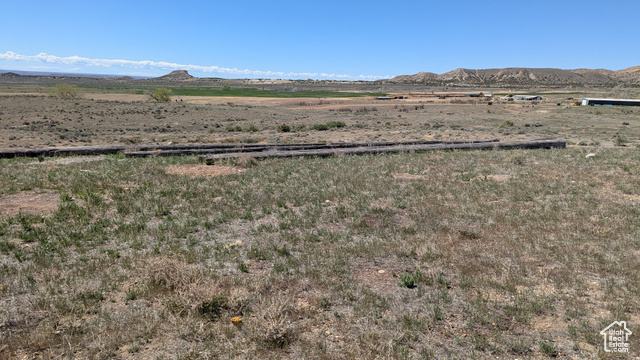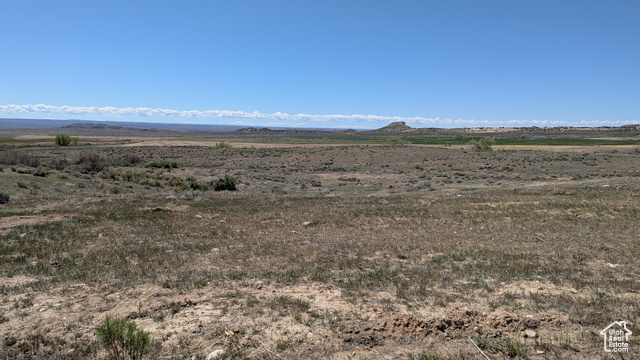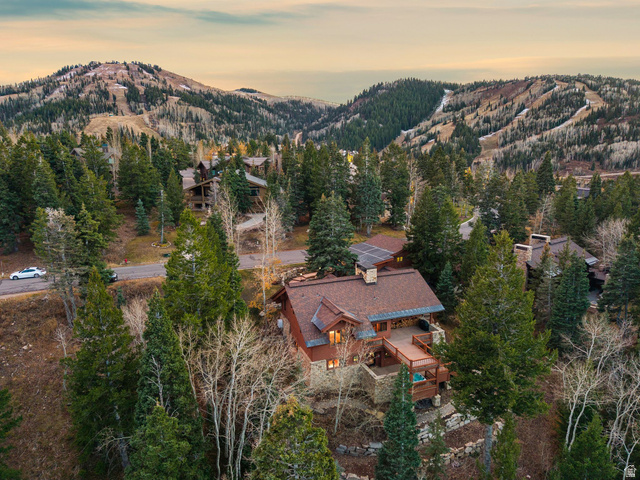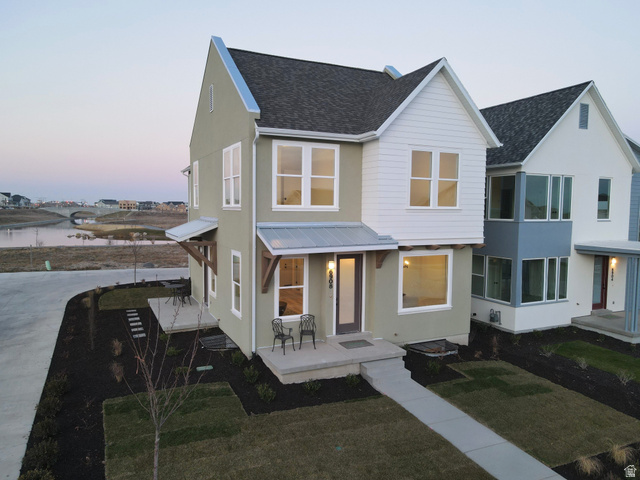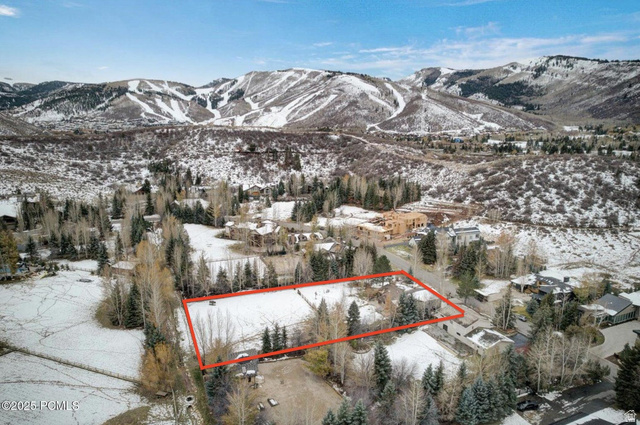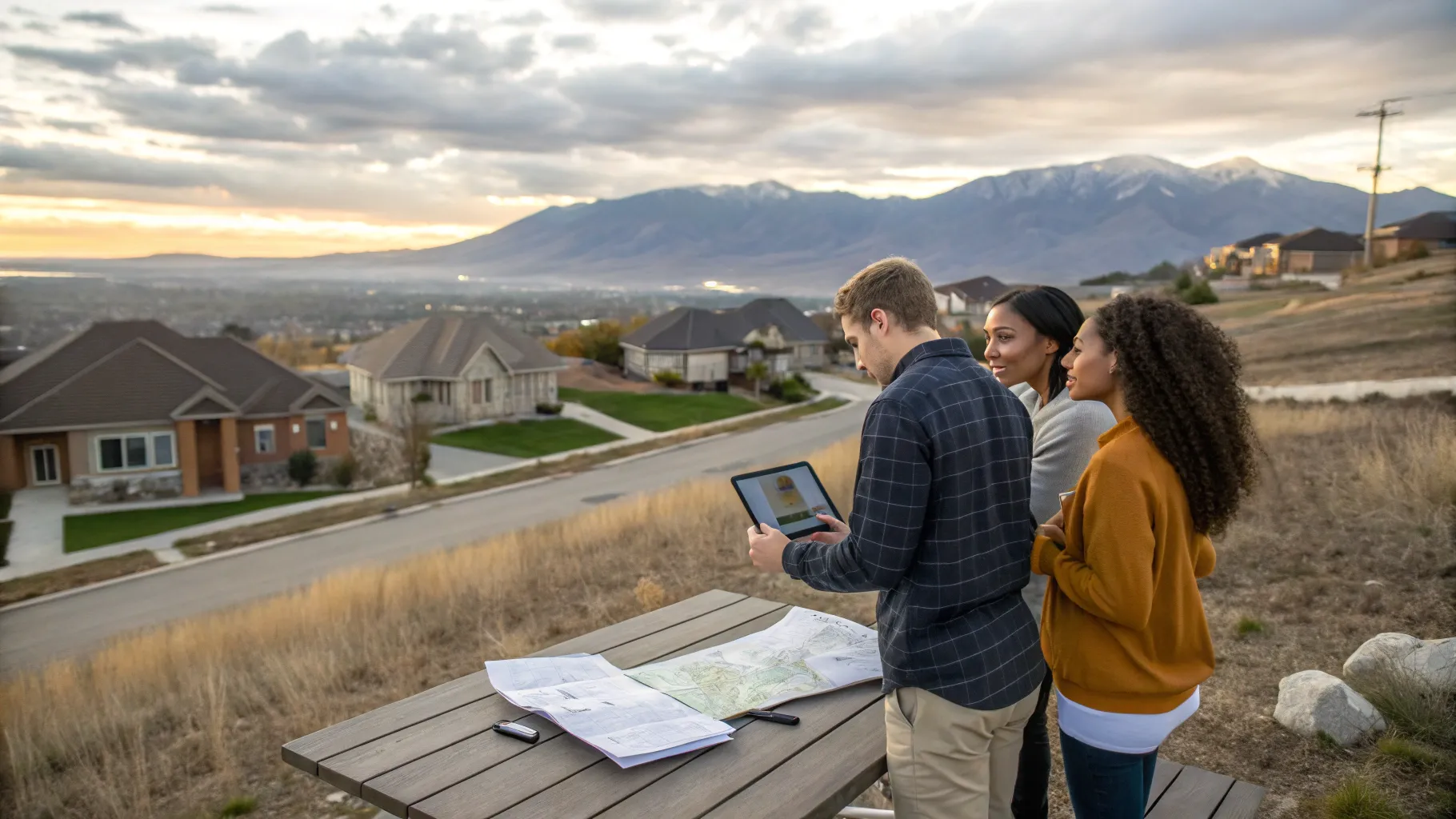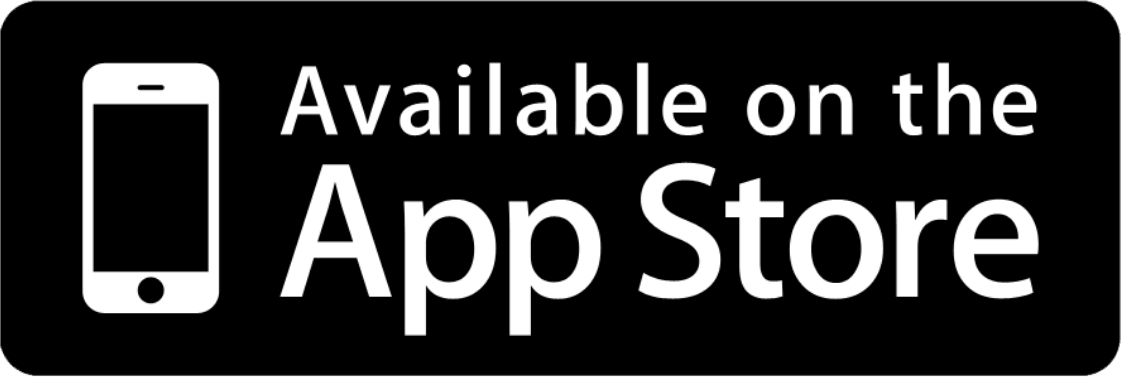Buying new construction in Utah offers modern layouts, energy-efficient systems, and neighborhoods built for today's lifestyles. However, the polished model homes and slick sales centers can hide recurring pitfalls that add thousands of dollars and months of stress.

Utah continues to attract newcomers for its outdoor access, growing economy, and family-oriented communities. Recent population forecasts project dramatic growth over the next several decades, and that trajectory is already reshaping neighborhoods, housing options, and infrastructure across the state. This guide answers the ten most common questions prospective residents ask about living in Utah, combining data, local context, and practical evaluation steps. It is designed to help families, young professionals, retirees, and investors decide whether Utah is the right fit and how to plan a successful move.
A short scene: why people relocate — an example
A world-class sculptor moved from the East Coast to Utah, choosing the state as the new home base for a nationally commissioned monument. The decision combined professional opportunity, civic enthusiasm, and a sense that Utah’s cultural and civic leaders are eager for large-scale public art and projects. This example captures two recurring relocation themes: meaningful professional opportunity and a welcoming local civic climate that can make ambitious projects attainable.
What the numbers say: the population forecast
Population projections from a respected state research institute forecast Utah growing by about 2 million residents over the next forty years, rising from roughly 3.6 million today to around 5.6 million by 2065. That kind of growth is similar in scale to adding another mid-sized state. The drivers are clear: strong in-migration, one of the nation’s highest birth rates, and robust job creation. With growth comes pressure on housing, transportation, schools, and air quality during certain seasons. Understanding these dynamics helps frame the practical answers below.
For official population data and demographic context, the U.S. Census Bureau and state resources can provide updated figures and county-level breakdowns. Example resources: census.gov and utah.gov.
How to use this guide
Each question below follows a simple pattern: common perception, reality on the ground, and practical evaluation steps a prospective mover should take. This structure helps translate general claims (“Utah is affordable” or “jobs are plentiful”) into personal decisions tailored to budget, lifestyle, and career goals.
1 — Is Utah affordable compared to other states?
Perception: Utah often appears more affordable than West Coast or Northeast coastal metros. Many people expect lower housing costs and a cheaper cost of living compared with cities like San Francisco or New York.
Reality: Affordability in Utah has shifted. Housing is not as inexpensive as it once was. Median home prices are high relative to many parts of the country because supply is constrained by geography and demand remains strong. At the same time, wages have climbed: Utah ranks among the top states for wage growth and is currently high in national wage rankings. That combination can balance higher home prices for some, while making Utah feel expensive to those coming from lower-cost regions such as parts of the Midwest or South.
How to evaluate affordability personally
- Calculate the true monthly cost of living: mortgage or rent, utilities, groceries, transportation, property taxes, and insurance. Utah’s property tax burden tends to be moderate; homeowners often pay around 0.5% of a home's value annually in property taxes, though the exact rate depends on the jurisdiction.
- Compare wages in the specific industry. Utah’s wage growth is meaningful, but job switches or moving into higher-paying sectors often unlock that benefit. Use local job boards and employer pages to compare salary ranges for comparable roles.
- Pick cities and neighborhoods by cost profile. The Ogden area is notably more affordable than central Salt Lake City. Conversely, neighborhoods adjacent to the Wasatch Range or close to downtown Salt Lake carry a premium.
- Run scenarios for multiple counties. For example, a home in Saratoga Springs can be significantly less expensive than a similar home in Daybreak or central Salt Lake City. Factor in commute cost and time when making comparisons.
2 — What is the job market and the economy like?
Perception: Utah is a rural state with limited employment opportunities beyond agriculture and tourism.
Reality: Utah’s economy is one of the strongest in the nation by several measures. Job growth, diversification, and unemployment rates are favorable relative to national averages. The Salt Lake City metropolitan area serves as a regional hub for technology, finance, healthcare, education, and logistics. Smaller metros and growing exurban communities are attracting businesses and remote workers. Entrepreneurship is active, and many newcomers cite Utah as an excellent place to start or scale a business.
How to evaluate employment prospects
- Map employers in the target industry. Identify major regional employers, health systems, universities, and fast-growing startups.
- Assess remote work flexibility. Many jobs in tech, marketing, and professional services allow remote or hybrid schedules, which creates flexibility in choosing a neighborhood.
- Research local workforce data. Local economic development councils and state labor departments publish county-level employment and wage reports.
- Plan a scouting trip to meet hiring managers or attend local networking events. A short trip can reveal whether the job market aligns with career goals.
3 — Housing: is it better to buy or rent?
Perception: Plenty of space and cheaper houses make buying easy.
Reality: The housing market is competitive. Prices are elevated in many parts of the state because demand outpaces supply. The rental market can also be tight in desirable neighborhoods. That said, buying remains a preferred strategy for long-term stability and wealth building, but it requires realistic expectations and preparation regarding price and timelines.
Practical guidance for buyers and renters
- Decide a time horizon. If the intention is to stay less than two years, renting often makes sense. For five-plus years, buying can be financially advantageous.
- Consider sight-unseen purchases only with experienced representation and strong contingencies. Many buyers rely on virtual tours and a local agent who can act as “boots on the ground.”
- Factor in housing inventory cycles. Seasonal trends, interest rate shifts, and new construction timelines affect available supply.
- Explore new construction versus resale. New communities in Utah are abundant but sometimes come with trade-offs in lot size, builder options, and time-to-completion.
For detailed comparisons of renting versus buying and planning moves, some local resources include pages that analyze renting vs buying scenarios and tips for first-time buyers, which can be explored on state real estate pages and local housing guides. Specific local market write-ups are available for decision-makers considering St. George, Provo, Park City, and Salt Lake City.
4 — Climate, seasons, and outdoor lifestyle
Perception: Utah means endless sunshine, skiing, and perfect weather year-round.
Reality: The state delivers exceptional access to outdoor recreation and distinct four-season weather, but it has nuances. Summers and winters are generally predictable, with hot desert climates in the south and snowy alpine conditions in the mountains. Spring and fall can be volatile: it is common to experience warm days followed by early snow. A major weather characteristic is the dry climate, which affects skin, hair, and daily comfort for those used to humid conditions. Inversions in the Wasatch Front during winter cause air quality issues; these are predictable and can be managed by planning trips to higher elevations or scheduling breaks from valley air.
How to evaluate climate fit
- Consider tolerance for dry air. Seasonal moisturizers and humidifiers are common household items in Utah.
- Plan winter alternatives. For residents sensitive to inversions, living closer to mountain access or scheduling regular mountain getaways reduces exposure.
- Assess desired outdoor amenities: proximity to ski resorts, trailheads, lakes, or desert landscapes should guide neighborhood choice.
5 — Community and culture: will newcomers fit in?
Perception: Utah is a typical suburb and a newcomer will easily blend in anywhere.
Reality: Utah’s communities tend to be family-oriented with strong civic networks. Cultural norms differ from place to place. Some neighborhoods are highly homogeneous and may create an immediate sense of belonging for those aligned with local norms, while others are diverse and vibrant hubs of newcomers, professionals, and creatives. Cultural fit depends heavily on the chosen neighborhood, not the state as a whole.
How to assess community fit
- Identify personal priorities: quiet suburban life, a tight-knit religious community, a modern urban environment, or a mixed, evolving neighborhood.
- Visit neighborhoods at different times of day and week to observe activity, walkability, and community hubs like parks, cafes, and gyms.
- Seek out local social groups that match interests: outdoor clubs, arts organizations, professional meetups, volunteer opportunities, and faith communities.
6 — Transportation and commute
Perception: Smaller state footprint means light traffic and easy commutes.
Reality: Commute dynamics vary. Average commute time across Utah is shorter than many western metros—around the low 20 minutes—yet congestion exists in high-growth corridors and new suburbs. Commutes from certain exurban areas can be lengthy during peak hours. Infrastructure projects are underway in many corridors, and travel times are expected to improve as road and transit expansions are completed.
Public transit options are strongest in Salt Lake County, with light rail and bus service concentrated in the metropolitan area. Outside the core metro, public transportation is limited to regional buses and commuter rail along major corridors.
How to evaluate commute trade-offs
- Map daily routes during rush hour to understand realistic travel times.
- Consider transit-accessible neighborhoods for reduced driving and improved event access. Salt Lake City’s light rail network makes some urban neighborhoods convenient without a car.
- Factor future infrastructure. New freeway and arterial projects can cut commute times substantially in a three- to five-year window.
7 — Schools and education options
Perception: Schools are uniformly excellent across the state.
Reality: Utah has excellent schools, but quality varies by district and neighborhood. High-growth communities can experience temporary strain on schools as new developments fill up. School ranking metrics may not immediately reflect actual classroom quality in fast-developing areas; it often takes a community several years to stabilize and for schools to achieve consistent outcomes.
How to evaluate school choices
- Visit schools, speak with administrators, and review enrollment figures to see whether a school is at capacity.
- Investigate charter, private, and magnet options in addition to public schools; Utah has a robust charter school ecosystem in many counties.
- Review long-term growth plans for neighborhoods. High-growth suburbs often include planned school construction but timing matters for families with young children.
8 — Healthcare, utilities, and living logistics
Perception: All services will be identical to those in larger coastal metros.
Reality: Healthcare systems in the more populated parts of the state are strong, with major research hospitals and a wide range of specialists, particularly in the Salt Lake City area. Rural pockets have more limited access. Utilities are relatively affordable in many parts of Utah, and some counties benefit from lower energy costs. The state’s dry climate and wide elevation range require attention to home systems like humidifiers and appropriate insulation. Neighborhood logistics—like proximity to grocery stores, clinics, and emergency rooms—should be evaluated during a scouting trip.
How to evaluate logistics for daily life
- Check distance and drive time to the nearest hospital and urgent care clinics.
- Confirm internet service options and speeds, especially for remote workers.
- Review utility costs and seasonal patterns; ask neighbors or HOA managers about average winter heating and summer cooling expenses.
9 — Downsides and trade-offs
Perception: Utah is all perks and few negatives.
Reality: Every place has trade-offs. In Utah, the most-cited downsides include the dry climate for those used to humidity, quirky alcohol laws in some jurisdictions, limited late-night nightlife in most cities, distance from the ocean, and winter inversion events that affect air quality. These are manageable for many but important for those with specific lifestyle or health needs.
How to weigh the downsides
- Create a list of non-negotiables and deal-breakers. If nightlife or proximity to the beach is essential, Utah might not align with those preferences.
- Plan mitigation: humidifiers, regular high-elevation recreation, and choosing neighborhoods outside the worst inversion zones can offset key negatives.
- Balance trade-offs with positives: outdoor access, job opportunities, and community networks often outweigh the downsides for many newcomers.
10 — How to decide if moving to Utah is the right move
Perception: A single checklist or article can definitively say whether Utah is right for anyone.
Reality: Determining fit requires personal priorities and on-the-ground exploration. Utah offers a rich set of opportunities, but success depends on matching lifestyle, career, and housing needs to the right city and neighborhood. A short scouting trip can reveal whether a place suits daily routines and personal tastes.
Decision framework: a step-by-step approach
- List must-haves, nice-to-haves, and deal-breakers. Examples: school ratings, commute time, mountain access, or nightlife.
- Research neighborhoods that match the list. Use local market guides and individual city resources for specifics.
- Plan a scouting trip. Spend time at different times of the day and week to understand traffic, noise, and community rhythms.
- Talk to local residents and real estate professionals for nuanced perspectives on growth, construction, and zoning that affect lifestyle and property values.
- Re-run financial scenarios with actual mortgage or rent quotes, property tax estimates, and utility costs before making an offer or signing a lease.
Where will Utah grow next?
Growth projections indicate several counties and regions that will see the largest increases: the Wasatch Back (counties north and east of the Salt Lake Valley near Heber and Midway), Utah County to the south (including Provo, Eagle Mountain, and Saratoga Springs), and southwestern Washington County (St. George and surrounding communities). The Salt Lake City metropolitan area will remain a central hub for the foreseeable future and is expected to grow more vertically as the valley fills. These shifts create opportunities for investment, new construction, and revitalized urban districts.
Key planning considerations for growth areas
- Infrastructure and transportation improvements will transform commute patterns over the next five to ten years. New roads, transit expansions, and interchanges often shift neighborhood desirability rapidly.
- High-growth suburbs may have younger schools, new retail, and more affordable housing initially, but rapid appreciation can follow as those communities mature.
- Investors should monitor zoning updates, planned public works, and water availability—particularly in desert communities where sustainable water planning is a priority.
Local resources, research tools, and further reading
Below are recommended resources and pages with in-depth local insights. Each resource should be read in light of personal priorities and the specific city of interest. The following city-specific resources offer practical guides and community profiles:
- Salt Lake City overview and neighborhood insights: https://bestutahrealestate.com/news/salt-lake-city/resources/pros-and-cons-of-living-in-salt-lake-city-utah
- St. George relocation and lifestyle guides: https://bestutahrealestate.com/news/st-george-utah-relocation-guide
- Park City living and investment guidance: https://bestutahrealestate.com/news/park-city/resources/living-in-park-city-utah
- Provo community profiles and school resources: https://bestutahrealestate.com/news/provo/resources/discover-why-provo-utah-is-the-place-to-live-in-utah
- Heber Valley and Park City market comparison: https://bestutahrealestate.com/news/heber-utah-vs-park-city-utah
For a statewide property search and additional tools, see: https://bestutahrealestate.com
For demographic verification and population tables, the U.S. Census Bureau publishes updated county and state population estimates: census.gov. State planning and growth documentation is available at utah.gov.
Buying, selling, and investing — tactical tips
Buyers
- Lock in a trusted mortgage pre-approval early. Utah’s market moves quickly in many submarkets, and a clean pre-approval increases negotiating power.
- Consider future infrastructure and projects that might change neighborhood fundamentals in the coming 3 to 7 years. New transit stops or highway interchanges can increase demand.
- Factor maintenance for Utah’s climate. Dry air, sun exposure, and seasonal temperature swings influence roofing, paint, and HVAC lifespan.
Sellers
- Timing and presentation matter. Neighborhood comparables and local demand cycles determine optimal listing windows.
- Staging and smart renovations yield high returns—curb appeal, efficient HVAC, and insulation upgrades are especially valued.
- Understand commission and disclosure practices specific to Utah. Legal changes and local customs can affect negotiations and closing timelines.
Investors
- Target high-growth corridors for long-term appreciation, but balance with rental demand metrics to ensure steady income.
- Investigate short-term rental regulations. Some communities restrict short-term rentals or require permits and compliance.
- Consider diversification across northern and southern Utah to hedge water and infrastructure risks.
Practical relocation checklist
- Identify three neighborhoods that match lifestyle and budget.
- Run commute and school simulations for each neighborhood.
- Schedule a scouting trip and attend local community events.
- Obtain pre-approval for mortgage and gather relocation cost estimates.
- If renting first, set a firm timeline for when to resume home searches to avoid getting priced out of target areas.
Final notes and recommended reading
Utah’s combination of natural beauty, economic opportunity, and community orientation has made it a top destination for families, professionals, retirees, and investors. Growth will continue to reshape neighborhoods and infrastructure, so newcomers who plan with local data and on-the-ground visits gain the best outcomes.
For deeper local insights, consult neighborhood guides and market reports for Salt Lake City, St. George, Provo, Park City, and Heber. Useful pages include the Salt Lake City neighborhood page, St. George relocation resources, Provo community guides, and Park City living pages listed above. For statewide property searches and listing tools, refer to https://bestutahrealestate.com.
Additional practical resources
- U.S. Census Bureau population and demographic data: census.gov
- State planning and housing resources: utah.gov
Planning a move to Utah becomes clearer when priorities, neighborhood research, and on-the-ground visits are combined. The right fit is less about a single city and more about matching lifestyle, career, and family needs to a neighborhood that supports them.
Frequently Asked Questions
Is Utah more affordable than coastal states?
Utah is generally more affordable than many coastal metros, particularly parts of California and the Northeast. However, affordability varies widely by city and neighborhood, and many newcomers from lower-cost regions will find housing and everyday expenses higher than expected. Wage growth in Utah helps offset costs for many people, but the decision should be based on a personal budget assessment that includes housing, utilities, transportation, and taxes.
How strong are jobs and wages in Utah?
Utah's job market ranks among the strongest in the country, with low unemployment and growing wages in several sectors, notably tech, healthcare, education, and professional services. Prospective movers should research industry-specific hiring trends and consider remote work options to maximize job flexibility.
Should newcomers rent first or buy right away?
The choice depends on timeline, financial readiness, and how confident the mover is about neighborhood preferences. Many new residents buy soon after arriving because the price appreciation and supply dynamics make purchasing sensible for long-term plans. Others prefer renting initially to test neighborhoods and commutes. A scouting trip and local market research will clarify the best path.
What is winter like, and how bad are inversions?
Winters are snowy in mountain areas and mild in desert regions. Inversions--periods of trapped cold air in the valleys--can cause poor air quality in the Wasatch Front. Inversions are predictable events and can be mitigated by spending time at higher elevations during peak inversion periods or by selecting housing in less-affected neighborhoods.
Do school rankings vary across Utah?
Yes. School quality differs by district and neighborhood. High-growth suburbs sometimes have new schools that need several years to stabilize. Parents should visit schools, review enrollment trends, and consider charter or private options where relevant.
Is public transportation available statewide?
Public transit is most developed in the Salt Lake City metro with light rail and bus networks. Outside the metro, transit options are limited to regional buses and commuter rail on major corridors. Residents who rely on public transit should prioritize living in Salt Lake County or transit-oriented neighborhoods.
What are the biggest lifestyle trade-offs?
Key trade-offs include dry climate effects, less nightlife in many areas, limited proximity to the ocean, and winter air quality inversions. For many, those trade-offs are offset by outdoor access, community networks, and career opportunities.
Where is Utah growing fastest?
Growth is concentrated in the Wasatch Back (Heber Valley and Midway), Utah County suburbs (Provo, Saratoga Springs, Eagle Mountain), and Washington County (St. George). Salt Lake City remains a central hub that is also increasingly building vertically as horizontal expansion becomes constrained.
Is healthcare accessible throughout the state?
Healthcare access is strong in populated regions, with major hospitals and specialty care in the Salt Lake City area and other regional centers. Rural areas have fewer options, so proximity to clinics and hospitals should be considered when choosing a location.
How should one start planning a move?
Start with a clear list of must-haves and deal-breakers, research neighborhood profiles, schedule a scouting trip, and secure a mortgage pre-approval if buying. For many people, a short in-person visit provides decisive clarity.

